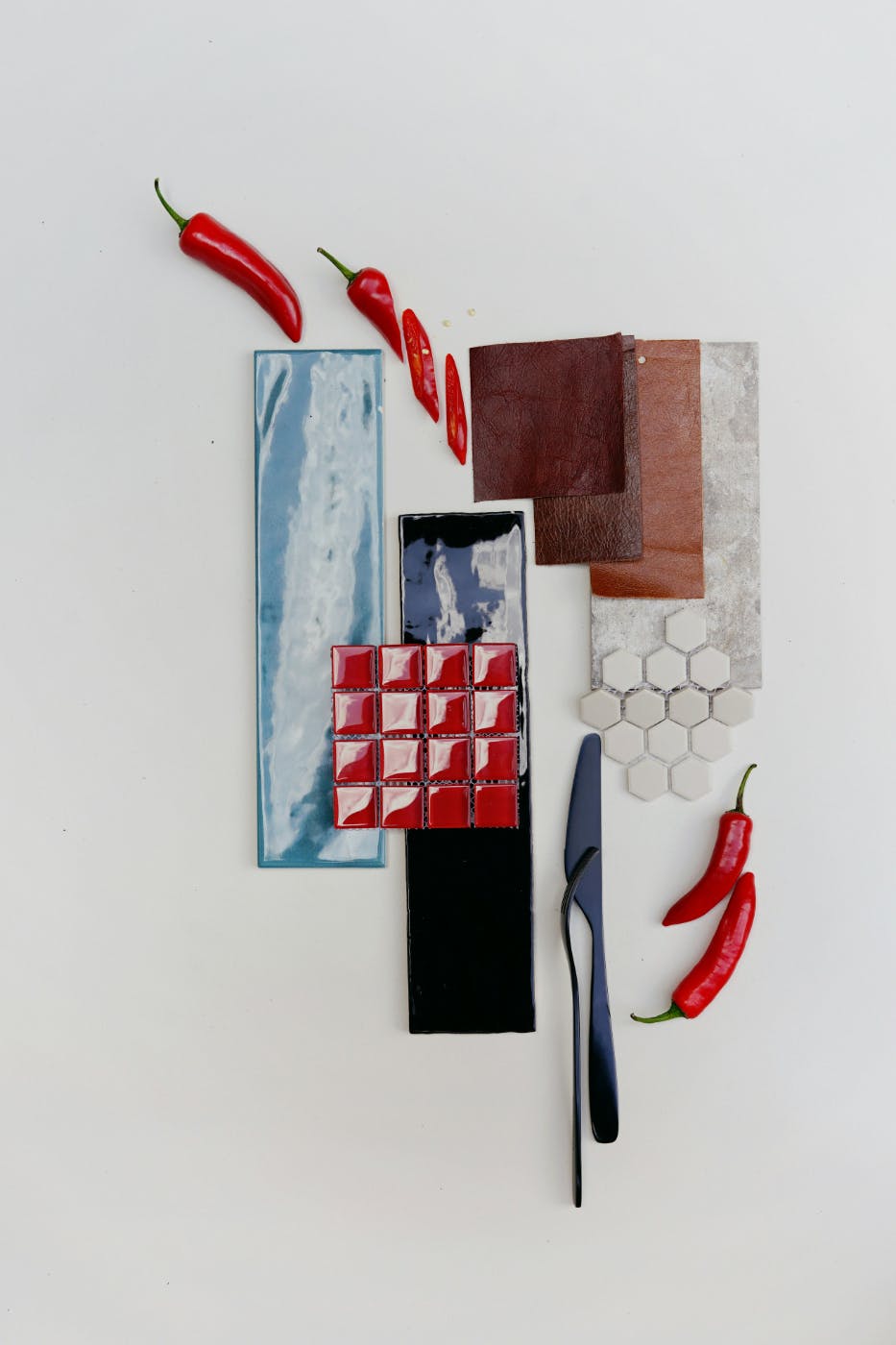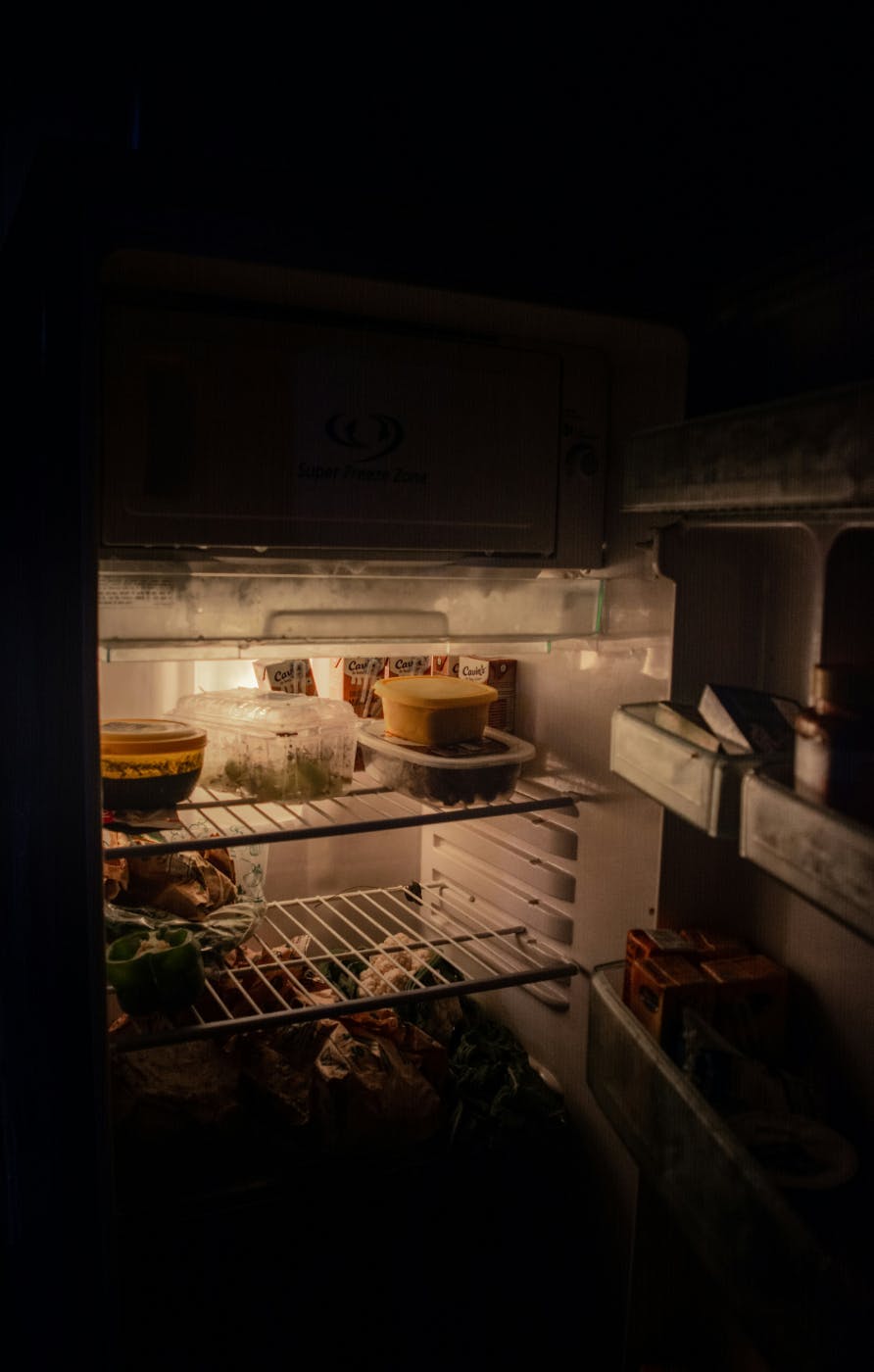
Turns out, brands have a fridge too. It's not stainless steel, but it does hum along in the background—full of things we thought we’d use, ideas we once loved, and leftover campaigns we keep telling ourselves might still be good if we just heat them up the right way.
I once had a roommate who viewed our refrigerator as a storage space. Not just for foods to be eaten later, but seemingly for anything he owned that needed a temporary home. Batteries. Film. Writing implements. And once, a pair of his girlfriend's underwear.
“Chilly turns her on,” he told me.
“Couldn’t she just move to Alaska and keep her panties out of the butter?” I replied.
I don’t have roommates anymore.
But even though I live alone, I travel a good deal, and it’s not unheard of for me to return home to a fridge that smells like hot death and is filled with foods mid-transition to new states of matter. My bad. I live alone—no one to blame the stink or the slushiness of bagged salad on but me.
I had this revelation upon returning home recently and seeing the remnants of a lasagna I had slaved over—now fuzzy, fermented, and morphing from a solid, cheese-laden triumph into a near-liquid, indistinguishable puddle of dear God, no.
That’s my home, my fridge, my fault. But when it comes to the office fridge, things get political. No amount of asking, demanding, passive-aggressive signage, or Tammy from accounting screaming during stand-up that taking people’s labeled food is a felony punishable by death seems to help.
The office manager has sent so many emails that it’s become a monthly newsletter: If something is left in the fridge for more than five days, it will be dumped. And yet—after five days, what’s in there has become so biohazardous that no one, not even Tammy in full hazmat cosplay, dares touch it.
So it sits. Forgotten, fermenting. The fridge becomes crowded with old foods, dead foods, and transitional states of matter—solid to liquid, liquid to gas, gas to "we're going to need a priest."
You Know the Fridge
That chaotic jungle of expired condiments and mystery containers? That’s not just an office phenomenon. It’s a metaphor—one that hit me squarely in the face (right after the smell of formerly edible lasagna did).
Turns out, brands have a fridge too. It's not stainless steel, but it does hum along in the background—full of things we thought we’d use, ideas we once loved, and leftover campaigns we keep telling ourselves might still be good if we just heat them up the right way.
Spoiler: they’re not.

The Forgotten Tagline (Smells Like 2009)
You know the one. It was born in a strategy session fueled by artisanal pastries and too much optimism. It had power. It had punch. It was printed on mugs, stitched onto polos, and emblazoned across the hero image of your homepage for three fiscal years.
“Innovate. Disrupt. Empower.”
Oof.
At the time, it felt cutting-edge. Visionary, even. But like a tub of hummus from a company picnic in 2017, it’s now a dry, forgotten crust in the back of your brand fridge. The problem? No one’s thrown it out. It still lurks in onboarding decks and pitch templates like a ghost of relevance past.
Taglines are tricky—they’re meant to be sticky, not shelf-stable. The best ones get to the soul of your brand. They communicate your difference, your energy, your why. But the worst ones? They’re generic, vague, and crammed with words that look good in PowerPoint but mean nothing in real life.
Ask yourself:
- Does it still reflect who we are now?
- Does it say something that no other brand can say?
- Would a human being actually say this out loud?
If the answer to any of those is “not really,” it’s time to let it go. Because here’s the brutal truth: if your tagline sounds like it could belong to a tech startup, a wellness app, and a community bank… it belongs to no one.
Great taglines age like whiskey. Forgettable ones age like milk.
So go ahead. Crack open that jar, give it a sniff, and if you flinch? Toss it.
The Expired Customer Persona
Every brand starts with someone in mind. You probably remember yours. You gave them a name. A backstory. Maybe even a stock photo and a Pinterest board. They were your muse, your compass, your “ideal customer.”
Let’s say her name was Debbie. Debbie was 35. She had two kids, used Facebook for community events, drove a silver Honda Odyssey, and made 82% of household purchasing decisions. Debbie was organized. Debbie liked a deal. Debbie was your north star.
And then the world changed.
Now Debbie’s kids have credit cards. She’s on TikTok (not posting, just lurking, but still). She buys groceries online, streams niche documentaries about mushroom-based packaging, and Venmos her yoga instructor. Debbie didn’t disappear—she evolved. But your brand? Still sending her emails about back-to-school lunch hacks like it’s 2014.
Here’s the truth most brands avoid: personas expire.
Not because they were wrong, but because people are moving targets. Culture shifts. Technology leaps. Needs change. And if your brand is still using the same audience assumptions from a strategy doc written during the Obama administration, you’re building relevance on a foundation of dust.
What to do instead?
- Update the story: Go beyond demographics—what are their current struggles, values, tech behaviors, and unspoken desires?
- Ditch the static avatar: Personas shouldn’t be paper dolls with bullet points. They should live and breathe and evolve.
- Stop generalizing: “Women aged 30–45 with disposable income” is not a persona. That’s a census category. Be specific, or be forgotten.
Holding on to expired personas is like planning a dinner party for someone who moved out years ago. You can set the table all you want—Debbie’s not coming.
And yet, even as she’s long gone, your brand’s still setting the mood. Same colors. Same tone. Same vibe. That once-fresh creative direction? Still hanging on the wall like it’s gospel.
Which brings us to the next item in the fridge.

The Moldy Mood Board
Ah, the mood board. The original shrine of your brand’s aesthetic identity. Once upon a kickoff, your team spent hours agonizing over this masterpiece—Pantone chips, aspirational imagery, maybe a quote or two from Steve Jobs or Beyoncé, depending on the vibe.
It was bold. It was beautiful. It was the north star for everything from your Instagram palette to your pitch decks.
And now? It’s a time capsule.
Let’s be honest—what once felt edgy and modern now reads like a trend report from a past era. There’s millennial pink. A succulent in a tiny clay pot. A woman wearing headphones and staring at a laptop like it just revealed the meaning of life. Helvetica Neue used with the reckless abandon of a brand that really wanted to look smart and minimal.
And still—still!—someone drags this crusty collage into every kickoff call like it’s the Holy Writ. “Just to make sure we stay on brand.”
But here’s the rub: you’ve changed. The market has changed. The design zeitgeist has changed. That mood board? It hasn’t. It’s gone stale. Worse—it’s misleading you.
A brand that insists on sticking to an outdated visual identity because “that’s what we’ve always done” is no different than a restaurant still using Comic Sans on its menus because they “paid for the font license.”
Look, visuals age. Tone ages. Style, more than almost anything in branding, evolves fast. The real danger isn’t looking outdated—it’s looking out of touch while thinking you’re still cool.
Want a brand that feels alive? Then refresh the references. Revisit your aesthetic regularly. Toss out the dead trends and make space for something unexpected.
Because even the prettiest inspiration board can turn into creative leftovers if it’s been sitting out too long.
And speaking of leftovers, some brands don’t just keep them. They serve them. Again. And again. And again.
The Reheated Campaign
We’ve all done it. That campaign you ran two years ago? It got solid engagement, didn’t break the budget, and hey, people seemed to like it. So you changed a color, swapped out the headline, and rolled it out again last year. And now here we are. Same campaign. Third run. Just with slightly more inclusive stock photos and an added hashtag.
It’s the creative equivalent of microwaving Tuesday’s Pad Thai on Friday and wondering why no one’s excited.
Reheating isn’t inherently bad. Some ideas—like great soups or Star Wars references—get better with time. But branding doesn’t always work that way. What once felt clever, timely, and “on message” can quickly become tired, transparent, and worst of all: lazy.
Repetition without reinvention is where great brands go to plateau.
You know the signs:
- Your “limited-time” offer has been running for 18 months.
- You’re recycling ad copy by copying and pasting... from your own Instagram.
- Your “refreshed” campaign is just the old one with a 10% discount slapped on like a bandage.
The result? Your audience sees it. They feel it. Even if they can’t articulate it, they start tuning out. Because people can smell creative stagnation the way you can smell a forgotten burrito in the back of the breakroom microwave.
Instead, ask:
- What worked emotionally last time, and can we approach that differently now?
- What’s changed in the culture, the market, or our brand that needs reflecting?
- Are we building from insight, or just reusing an old Canva file?
There’s a fine line between consistency and complacency. Don’t confuse the two. Your audience wants to recognize you, not relive your greatest hits on loop.
So if your campaign is back in circulation for the third year in a row, ask yourself: is it a signature dish, or are you just serving stale spaghetti?
Because once the leftovers are gone, what’s left in the fridge? Usually, it’s the weird stuff. The unlabeled, the long-forgotten, the thing no one wants to open… but no one dares to throw away either.

The Mysterious Acronym (Wait… what was this for?)
Every office fridge has one: a Tupperware container, unlabeled, vaguely sticky, shoved way in the back behind the oat milk and passive-aggressive Post-it notes. No one remembers putting it there. No one wants to touch it. And no one—absolutely no one—is willing to open it.
Your brand has its own version of this. It’s called “QRM Initiative Deck V2 FINALFINAL_realFINAL.pptx.” Or maybe it’s a folder labeled “BLT System – Archived 2021 (Do Not Delete).”
At one time, this file—this acronym, this program, this internal initiative—meant something. There were meetings. Slides. Slack threads. Maybe even swag. But now? Now it just sits there. Frozen in digital amber. Everyone’s too scared to open it, too confused to remember what it actually was, and too nervous to delete it “in case we need it later.”
It’s the kind of clutter that silently bloats your brand’s creative ecosystem. Old frameworks, abandoned campaigns, renamed departments, outdated metrics… All still lurking in the cloud, popping up in meetings like ghosts of strategies past.
The worst part? No one’s even sure who’s responsible for it anymore.
Here’s the test:
- Can anyone explain what it means, without checking an old slide deck?
- Does it show up in meetings but never get acted on?
- Is it kept around out of fear, nostalgia, or the phrase “just in case”?
Then, congratulations—you’ve got yourself a Mystery Acronym.
And look, there’s no shame in having legacy junk. But if your brand is clogged with unloved initiatives and dusty frameworks no one understands, you're not archiving—you’re hoarding.
Clean brands aren’t the ones with no past. They’re the ones willing to let go of it.
If you've ever hovered over a mysterious file thinking, “I don’t know what this is, but deleting it feels like a trap,” you’re not alone.
But at some point, you have to stop fearing the funk and start scrubbing the fridge.
Because, whether it’s expired taglines, ghostly personas, or acronym soup from a strategy sprint no one remembers, every brand reaches the same inevitable point:
It’s time for a clean out.
Time for a Clean Out
There’s no shame in a little mess. Every fridge gets crusty. Every brand collects buildup. But the real danger isn’t the clutter—it’s pretending it’s still fine.
The truth is, branding is not a set-it-and-forget-it activity. It’s a living, breathing system. And like any system, it needs care. Attention. The occasional purge.
You don’t need to burn it all down. You just need to be honest about what’s still working—and what’s stinking up the back shelf.
Here’s a simple brand clean-out checklist:
- Check your messaging. Does your core story still resonate, or is it padded with empty jargon and phrases no one believes?
- Review your visual identity. Are your colors, typefaces, and templates actually current, or are they just familiar?
- Rethink your personas. Who are you really talking to now? Are they evolving while you’re still marketing to a ghost?
- Inventory your campaigns. Is there anything you’re reusing out of habit instead of relevance?
- Audit your assets. Look through decks, folders, and internal docs. If it’s confusing, duplicated, or smells like 2020, it’s time to go.
Most importantly: let go of things that once served you but no longer do. That doesn’t mean they weren’t valuable. It just means their time is up.
Great brands aren’t the ones that never change. They’re the ones that know when to change. And they’re not afraid to lift the lid, wince at the smell, and do what needs to be done.
Summing Up
So here’s your challenge: check your fridge. The real one and the brand one. Toss the fuzzy lasagna. Dump the tagline no one understands. And if you see something in a file folder labeled “DO NOT DELETE,” well… maybe open it with gloves on.
Fresh brands, like fresh food, nourish people. Everything else? It’s just leftovers.

